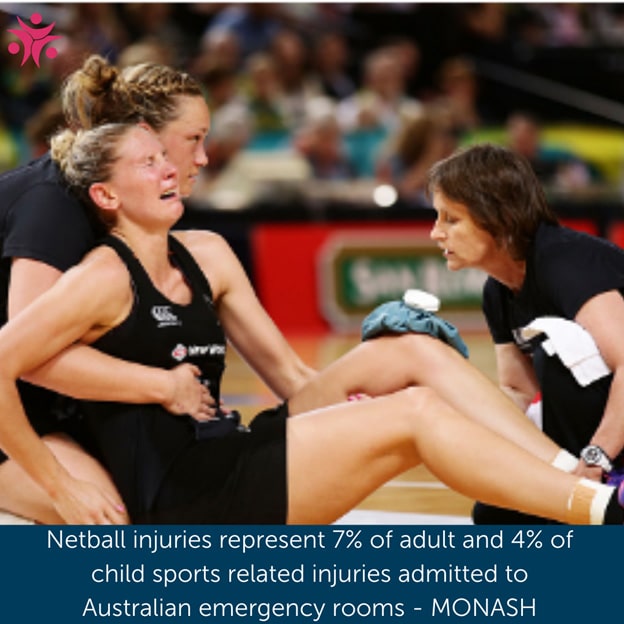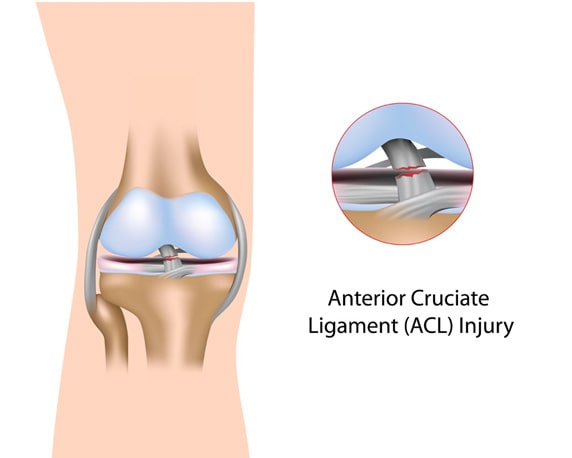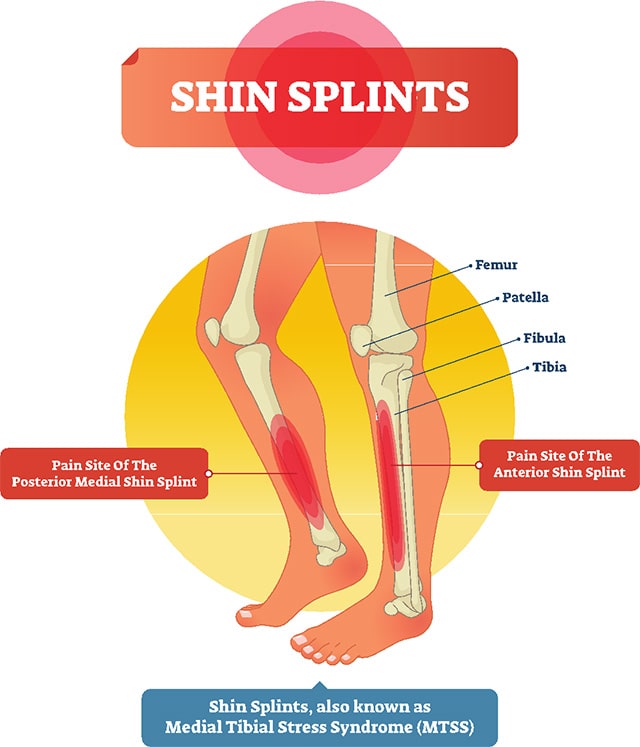Make an Appointment
As one of the most popular sports in Australia, netball attracts players of all ages. Whether you play weekly with some mates just for fun, you’re on your school’s or local clubs netball team, or you’re hoping to play professionally, one reality of the sport is that injuries are common.
With so much twisting, jumping, and explosive movements, it’s no surprise that you’ll probably experience a netball injury with enough play. So, here we’re going over the five most common netball injuries and how to prevent them so we can keep you on the court longer.
Netball Injuries Statistics
Before we get into the most common netball injuries, first, let’s get into the numbers. Here are a few statistics from the Australian Sports Commission:
- Between 2002 and 2003, 1,129 people across Australia were admitted to hospital for a netball injury.
- Between 2002 and 2003 in Victoria, 2,316 went to the emergency department for a netball injury.
- The rate of injury for a netball player is 14 injuries for every 1,000 hours played.
According to another study from the Journal of Science and Medicine in Sport, most netball injuries are not the result of direct contact. The study found that between 66.1 and 71.4 out of 1,000 participants sustained a non-contact netball injury.

Most netball injuries are mild strains and sprains, but the most severe netball injuries are, usually, knee injuries and fractures.
Next, we’re sharing the five most common injuries in netball and how to prevent them.
Common Injuries in Netball
Ankle Sprains
First on the list is ankle sprains where you twist your ankle causing the ligaments or muscles to tear. With so much running, jumping, and quick direction changes in netball, it makes sense that ankle sprains would be a common netball injury.
Causes of ankle sprains in netball:
- Rapid acceleration
- Sudden pivots or changes in direction
- Sprinting
- Jumping
- Previous ankle sprain
- Improper athletic shoes
- Skipping warm-ups
- Muscular imbalances
- Being overweight
- Improper landing position from a jump

Symptoms of an ankle sprain:
- First-degree sprain: Little to no swelling, mild stiffness and pain in the ankle joint
- Second-degree sprain: Some swelling and stiffness, moderate to severe pain, difficulty bearing weight, joint instability
- Third-degree sprain: Severe pain and swelling, unable to bear weight, instability, loss of joint function
How to prevent ankle sprains:
- Improve any muscular imbalances in the lower limbs
- Work to strengthen and add mobility overall
Other ankle injuries one might experience from playing netball include:
- A rolled ankle
- Broken or fractured ankle
- Tendinitis in the ankle or Achilles tendon
Other useful resources for ankle related injuries
- Ankle sprains. Why do they happen again & again?
- Lateral ankle sprains. Treatment & rehab strategies.
- Ankle strapping for ankle injuries.
Patellofemoral Syndrome
Also known as patellofemoral pain syndrome or PFP, patellofemoral syndrome comes on gradually over time and is a broad term characterised by pain in the kneecap area.
Causes of PFP in netball:
- Cutting or quick turning motions
- Jumping
- Sudden pivots or changes in direction
- Affects females 2 to 10 times more than males
- Weak quadriceps and hips
- Poor running form
- Improper shoes
- Muscular imbalances
- Tight lower limb muscles
The main symptom of PFP is the gradual onset of pain directly on or underneath the kneecap.
How to prevent PFP:
- Improve movement efficiency
- Strengthening throughout the glutes, hamstrings, and hips
- Improving quadriceps activation
- Enhancing ankle and hip mobility
- Enhancing hamstring flexibility
Patellar Tendinitis (Jumper’s Knee)
The patellar tendon is the tendon that attaches your quadriceps to the shinbone and passes through your knee. Patellar tendinitis, therefore, is the inflammation of this tendon.
Causes of patellar tendinitis:
- Constant jumping and landing
- Lower limb muscular imbalances
Symptoms of patellar tendinitis:
- Pain and tenderness in the knee
- Pain in the knee that arises during play but that doesn’t always subside with rest
How to prevent patellar tendinitis:
- Tape the knee to avoid excess movement in the knee joint
- Exercises to balance the lower limbs
- Strengthening exercises such as lunges and squats for the lower limbs
ACL Injuries
Your ACL, or anterior cruciate ligament, is one of the four major ligaments that help to stabilise the knee joint. It attaches the femur to the tibia and runs through the knee. An injury to your ACL can be devasting.
Causes of ACL injuries:
- Forceful twisting on the knee when the foot is planted
- Landing from a jump in a “knocked knees” position
- Poor hip and glute muscle strength
- Weak quadriceps
- Hamstring imbalances
- Other poor landing techniques
- A forceful blow to the knee when the foot is planted
How to Prevent ACL injuries:
- Improve dynamic joint stability
- Improve movement efficiency
- Improve neuromuscular control
- Improve landing technique, particularly avoiding the “knocked knees” position when landing
- Increase strength in glutes and hamstrings
- Balance the hamstring to quadriceps strength ratio
- Reduce weight-bearing load on the ACL and knee joint
Other possible netball injuries of the knee include:
- Knee bursitis
- Inflammation of the knee joint
- Dislocated kneecaps
- Arthritis of the knee

Other useful resources for ACL injuries
- Netball Australia KNEE program. Reducing ACL injury risk
- Anterior cruciate ligament injury treatment options
Shin Splints
Shin splints are a repetitive stress injury that tends to come on gradually. They are typically caused by poor form while running and weak shin muscles, manifesting as pain near the tibia (shin) during play that continues even after the game.

How to Prevent Shin Splints:
- Shin exercises that help strengthen the muscles that pull your foot into a flexed position
Other useful resources for Shin Splints
Prevention of Injuries in Netball
As you examine these common netball injuries, you might start to notice a few common themes between the causes of these injuries. Prevention, therefore, is all about stopping these causes from happening before they start.
We already went over prevention techniques for each individual netball injury, but these are the best ways to prevent netball injuries in a general sense.
- Engage in cross-training and physical fitness training before playing netball
- Always warm-up, cool-down, and focus on both flexibility and strength
- Perform balancing techniques
- Be aware of muscle imbalances and perform exercises to correct them
- Learn proper passing, catching, and landing techniques
- Wear protective equipment during play
- Seek professional advice on proper athletic shoes
- Consider preventative ankle tape or braces
Physiotherapy to Prevent Netball Injuries
Now, that you understand what to strengthen or stretch to help prevent netball injuries, you’re probably wondering what exercises can actually help you reach that goal. That’s where a physiotherapist comes in.
When you see a physio, they’ll be able to quickly assess your strengths and weaknesses to create a personalised exercise plan to help you prevent netball injuries as best you can. Without one, you’ll likely be shooting in the dark (get it?).
Call us today to meet with one of our friendly physiotherapists at a convenient clinic near you. Or use our mobile physio services that can come straight to you. Potential injuries shouldn’t stop you from playing netball. Let’s work together to prevent netball injuries as much as possible.
Date Published: Monday, September 7, 2020
Need to get into direct contact with ur Client Services team? We're all ears. Call our team directly on 1300 731 733
